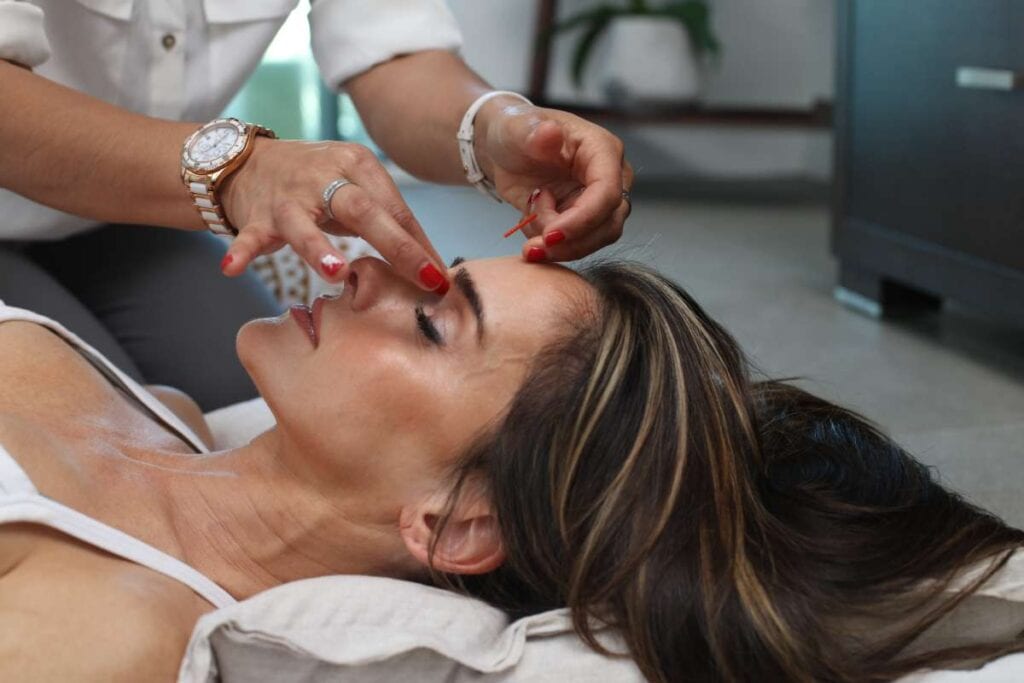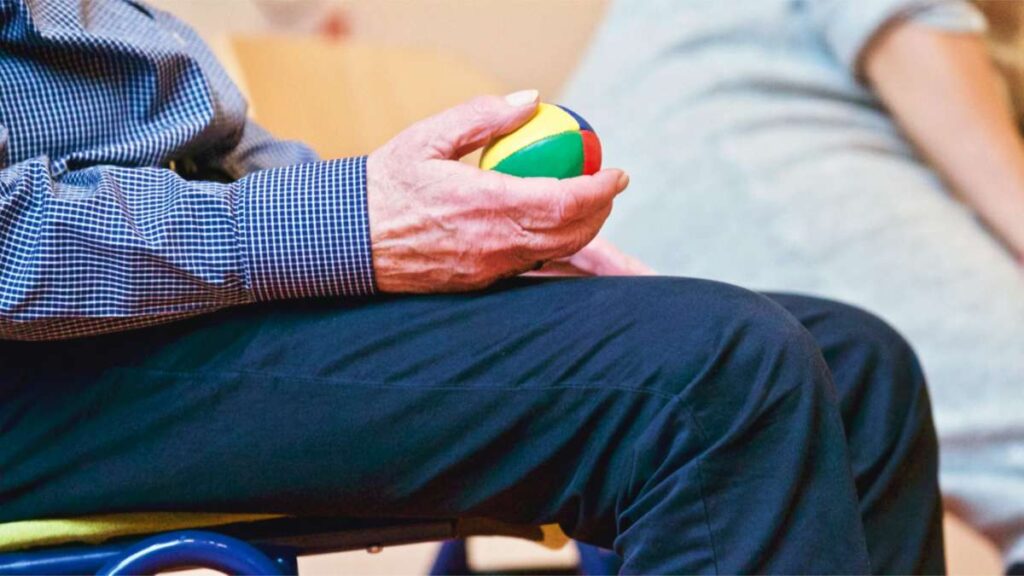Most people don't know much about Brainspotting therapy, and you're probably no different. If you are struggling with anxiety, depression, or another mental health issue, however, this is a topic you should investigate further. Brainspotting is a novel therapeutic approach that has shown promising results in the treatment of a range of psychological issues. If you're curious about brainspotting and whether it can help you deal with mental health issues, read on.
Frequently Asked Questions
The mind-body therapy known as brainspotting focuses on locating, digesting, and ultimately letting go of emotional stress, trauma, and imbalances. It blends techniques that focus on the body, the strength of the therapeutic connection, and processing that centres on the brain. It is predicated on the idea that "where you gaze impacts how you feel" and arrives at the conclusion that eye locations correlate with unconscious emotional experiences. It is able to access areas of the brain that are typically inaccessible through more conventional forms of talk therapy as well as the vast majority of other methods of therapy.
Brainspotting is a highly effective therapy for treating stress, anxiety, trauma, addictions, ADD/ADHD, performance anxiety, unhealthy habits, phobias and a host of emotional and mental health imbalances. Brainspotting engages our innate drive to release sensory, residue or unresolved experiences and opens us up to new insights, equilibrium, regulation and improved overall health.
During a session of Brainspotting, the brainspotting therapist will assist you in determining a problem area that needs to be addressed. When you put your attention on the problem at hand, you will become aware of how you sense, feel, and experience it in both your mind and body. The eye position or 'brainspot' that is related with this condition can then be determined using this information. A brainspot is not simply a single location in the brain but rather an active network throughout the brain that leads to a profound discharge of the issue in the places in the mind and body where it is stored.
The concentrated eye posture makes it possible for the brain to stop monitoring the environment for potential dangers and instead conduct an internal self-scan to locate and keep its attention on the underlying problem that has not yet been resolved. When a specific region of the brain is stimulated, the therapist is able to observe reflexive movements that provide an important gateway to the healing process. These motions originate in subcortical regions of the brain, which are not accessible to our conscious, cognitive, or verbal knowledge.
People who have tried Brainspotting claim that it provides them with more significant emotional relief than other brain-based or traditional therapies. During a Brainspotting session, the brain is reorganising, replenishing, and resetting itself; this processing frequently continues even after the session has been completed. A passageway has been made accessible, and knowledge will continue to surface and emerge for the purposes of letting go and getting well.
It is possible for each person's total number of Brainspotting sessions to be different. As a direct consequence of this, some individuals see change after only one session.
Brainspotting is a highly effective and potent form of therapy. Several studies have shown that Brainspotting therapy is effective in treating a variety of mental health conditions, including stress, anxiety, and trauma. As a result of the tragedy that occurred at Sandy Hook Elementary School, victims and their families have cited it as the therapy that has been the most useful and effective in reducing their feelings of anxiety, stress, and trauma. Unfortuitously, the use of Brainspotting as a potent therapeutic technique has received more attention than study into its effects. Therefore, additional research must be conducted before it may be included in the national registry of evidence-based procedures.
How Does One Go About Using Brainspotting?
People's feelings may be influenced by the way they aim their sight. Brainspotting is a form of therapy in which patients are taught how to focus their gaze in order to identify the triggers of negative emotions. During brainspotting therapy, the therapist uses a pointer to gently guide the patient's gaze around the visual field to predetermined "brainspots." A "brain spot" is a specific point of gaze that brings up a distressing memory or feeling. Practitioners of the method believe it helps them connect with their patients on a more emotional level and address the physiological consequences of trauma more effectively.
Evidence is accumulating that trauma can be "stored" in the body and impact how the brain works. Some of the ways in which trauma can influence an individual is by altering their emotional state, their ability to remember, and even their physical well-being. There is evidence that brainspotting can help the body heal from the impacts of trauma.
In Brainspotting therapy, the therapist practises a technique known as "dual attunement," in which they tune into both the therapeutic interaction and the client's brain-body response at the same time. Conventional therapies investigate the "locations" (physical and emotional) of distress. There is evidence to show that brainspotting has an effect on the limbic system, a cluster of brain regions involved in the regulation of emotions, long-term memory, thought processes, motivation, and impulsivity.
The Origins Of Brainspotting's Development
Because of Grand's efforts to integrate somatic experiencing (SE) with eye movement desensitisation and reprocessing therapy (EMDR), the latter of which he founded, Natural Flow EMDR was born. This method integrated the two forms of treatment. Grand found that Natural Flow EMDR was helpful for some of his patients, so he incorporated it into the trauma counselling he delivered to more than a hundred people who had survived the September 11 attacks. After witnessing a patient with physical and mental trauma achieve rapid and considerable progress during a session in which a locked eye position facilitated a cathartic expression of memory and emotion, he decided to further research and develop this method of therapy. Brainspotting is a rapidly growing subject of psychology, and there are now more than 8,000 therapists trained in the method. This technique was established because Grand received proper instruction.
Check this list of Rehabilitation Programmes to help you make an informed decision for your treatment.
The Distinctive Characteristics of Brainspotting, Compared to EMDR, Hypnosis, and Se
Brainspotting, eye movement desensitisation and reprocessing (EMDR), schema enhancement (SE), and hypnosis all lead to similar mental states in clients. Nonetheless, each approach brings something unique to the table to meet the needs of each given customer. With the aid of the Brainspotting System (BSP), people can learn to independently traverse their own subconscious. Initially, they decide which issue they'd like to tackle first. After that, the therapist will give just general instructions as the patient explores the space within and around the object. For this method to work, one must keep one's eyes steadily fixated ahead. The more severe traumatic events of the client are also addressed in eye movement desensitisation and reprocessing, or EMDR for short. The goal of inducing hypnosis in a patient is to facilitate therapeutic benefits. The sessions are primarily guided by their instructions to the client on what they should be thinking about. Somatic experience (SE) refers to a method of treating traumatic stress in which the client is gradually reintroduced to stimuli associated with the traumatic event. The therapist leads the patient through a series of experiences, some soothing and some triggering, to help them work through their issues. In this way, a healthier mental and physical response is trained. Mind-body therapies like EMDR, SE, and hypnosis tend to be more structured than others. Customers who feel safest when adhering to meticulous procedures would love these. BSP programmes are helpful when individuals in addiction therapy need more freedom to confront their experiences. It's possible that you'll feel more invested in and satisfied by your therapy if you have a larger role in shaping its course.
An Explanation of Brainspotting as a Method of Treating Addiction
Those in recovery from addiction who practise Brainspotting are able to delve deeper into their experiences. The BSP treatment is based mostly on the adapted techniques of two different approaches:
- Somatic Experiencing (SE)
- Eye movement desensitisation and reprocessing (EMDR)
All of these things, working together, will help diagnose and treat the possible causes of your addiction. The following steps make up the fundamental mechanism of brainspotting:
- The process of unearthing suppressed experiences through supervised sessions of brain spot-searching.
- Unprocessed trauma releases physical and emotional healing.
The customer is the engine that keeps the business going. The client's vision is directed towards a trouble area of the brain, and while doing so, they are free to fixate and immerse themselves in this region of the mind as much as they desire. There may be as few as two or three sessions or as many as many more. It depends on how much emotional trauma the person has endured. If issues are addressed via CBT, it's probable that the duration of the programme will grow. Your skill level will dictate how well this treatment works for you.
Knowledge Obtained From Watching Brainspotting

There aren't many tangible abilities that can be gained from practising brainspotting alone. Its major goal is to shed light on elusive feelings and ideas. There may be a need for additional therapies during the actual surgery. Conversely, some of the abilities that can be developed with BSP training are:
- overcoming fears of public scrutiny
- learning to adapt to changes in one's own state of mind and emotions
- Developing a more introspective and assured perspective on one's own capabilities
- An understanding of how venting negative feelings can help you feel better
- The first stage is realising where and how your body keeps stress.
Brainspotting is just one of several therapeutic methods that you, the client, may try. The following are a few examples of the transferrable abilities that can be gained using CBT techniques:
- Finding causes for concern and having productive conversations about them is essential to success.
- The process of recognising and countering harmful concepts, as well as eliminating the conditions that give rise to them.
- Knowing that your past is set in stone and focusing your energy on building a better present is the only way to achieve happiness.
- Understanding your triggers is essential for modifying your reactive behaviour.
Brainspotting's discoveries help you learn more about yourself by zeroing down on the places where you're having difficulty. As such, it provides an ideal springboard for growth during the healing phase of rehabilitation. Consistent attendance at brainspotting sessions is the single most critical predictor of success. Are you looking for the best rehab centre? Then Refocus Rehab Melbourne is the answer.
What You Should Be Aware Of Prior To Beginning Brainspotting Therapy?
Think long and hard about whether or not Brainspotting is the right treatment for you. Please keep the following in mind before we begin: Sometimes the truths, however painful they may be, are the only way ahead. In order to help oneself heal, one must sometimes go where one is likely to get hurt. To get the most out of therapy, you'll need to be prepared to totally immerse yourself in the process, even if it means suffering through tough times. Suppressing painful memories can have devastating consequences. You should be upfront with your therapist about your struggles with emotional instability. There is a risk that the BSP discoveries could soon lead to psychological issues, thus caution is advised. Do not try brainspotting if you have experienced a severe injury. You'll need a safe and controlled setting to let all your emotions out in while undergoing this kind of treatment. If you can't safely process the stimulation, stimulating extremely painful areas may make your issue worse. Due to the novelty of the practise, brainspotting may not yet exist in your area.
How Efficient Is The Method Of Brainspotting?
Both brainspotting and Eye Movement Desensitization and Reprocessing (EMDR) therapy aim to help patients reprocess traumatic experiences and retrain their emotional responses. There has been more in-depth study of EMDR, the more well-known of the two therapies, but therapists are increasingly turning to brainspotting and reporting outstanding results.
Brainspotting has found its most significant uses in the domains of trauma therapy and PTSD treatment. However, there is countervailing evidence that it helps hasten recovery from injury, ease physical illness, and combat issues like distraction, stress, and a lack of motivation. There are also therapists who believe that traumatic events could be the origin of a wide range of mental health issues, including but not limited to impatience, procrastination, and inability to focus. Therefore, brainspotting may show to be a very effective form of therapy for those who are interested in resolving one or more of these challenges.
Who Is Able to Gain from Using Brainspotting?

Brainspotting could help those who have experienced either physical or psychological trauma. To cite an example: [Citation needed] This form of treatment shows promise as a means of alleviating the symptoms of the following diseases in some patients:
- Any and all harrowing encounters
- Anxiety
- Problems focusing (ADHD)
- Difficulties Managing Anger
- Phobias
- Substance abuse
- Chronic pain and fatigue are both prevalent.
- Struggles with Self-Regulation
- Dissatisfaction with Athletic Results
When Should You Think About Attending a Brainspotting Program in Another State?
Even if a particular brainspotting programme is not offered in one's native state, travelling to another state to participate in such a programme may still be beneficial. OoS brainspotting therapy is also useful for helping people with:
- The general quality of the curriculum has improved, and now there is more specialised training.
- Commitment to treatment because of elevated participation in the recovery procedure
- By separating yourself from the things that trigger your addiction, you can reset your mind.
- In-person interactions are unparalleled when it comes to creating a memorable and profound experience.
Brainspotting sessions in another state may be part of a larger plan of care for recovery. Many people who use intensive outpatient programmes or sober living houses report positive outcomes as a result of the supplementary treatment they receive there. However, if you need care over a longer length of time, you might have to spend some time away from home. Local services may be more convenient for customers who are unable or unable to leave their caregiving obligations. Some initiatives provide babysitters or other carers to assist with the kids. It may be more challenging for customers who live in other states to get out of commitments lasting many weeks. You would do yourself a huge favour if you could only keep in mind how important it is to look after yourself. Brainspotting is offered as an alternative by some businesses, and this alternative takes the shape of online video chat sessions. If you or a loved one believe that counselling is important, it is in everyone's best interest to explore all available options until you find the best fit, whether that's in your home state or elsewhere. Before beginning brainspotting therapy, a client should find a therapist who is a suitable fit.
Make careful to ask about any of the following areas while conducting your search: If brainspotting were to be performed on you, do you have the appropriate credentials to perform it? If you want proof that your prospective therapist has had adequate training in BSP, certification is one option. Therapists must undergo training during which they learn BSP techniques, conduct research on them, and receive guidance as they implement them with clients. Do you have any additional cognitive or behavioural therapy training? However, there are many treatments available to assist you in making necessary changes. Brainspotting is useful for finding hidden injury sites. CBT-trained therapists can help you modify any unhelpful patterns of thought or behaviour identified by BSP.
How long have you been honing your ability to recognise brilliant ideas? You can learn more about the candidate's experience with BSP clients beyond certification with the help of this enquiry. Most of the time, the help you get from a therapist depends on how many years of experience they have. Should I go with this therapist, or do I have doubts? It's not easy to process the feelings and thoughts presented in BSP. A person can only make headway in therapy if they feel they can trust their therapist enough to share their thoughts and feelings with them. Express any concerns you have before beginning.
How Does a Session of Brainspotting Therapy Typically Go?
Your brain spotting therapist will start your first session by gathering information about you and the issues you want to work on. Furthermore, they will be curious to find out more about you. In the initial session, while your therapist gets to know you and your issues, you may not do any brainspotting at all.
Once you and your therapist have decided to work together, she or he may ask you this question to determine where in your body you will experience the greatest surge of energy while you discuss your area of concern. To get the finest outcomes, it's important to keep in mind that the emphasis should be restricted. For example, if you want to repair your damaged connection with your parents, telling them about the whole situation won't do the trick.
See our list of available Rehabilitation Programmes to help you make
Working Off of the Activation System
Some people describe tingling feelings, discomfort in their stomach, tightness in their shoulders, pressure on their chest, etc. Once you've pinpointed the area of your body that's being activated, your therapist will probably have you use a scale from 0 to 10 to assess the intensity of the experience. Once you identify the part of your body experiencing this activation (some individuals report tingling sensations, stomach aches, shoulder tension, etc.), you may begin to treat it on a scale from 0 (not at all) to 10 (10 being the most extreme). It provides a foundation upon which we may develop our initial efforts.
Using Something As A Resource
There is a risk that those who have suffered extreme trauma cannot bear the demands of working from activation. Instead of focusing on the problematic region, we might shift our attention to the part of your body where you feel the most calm or secure while the rest of your body is attended to. Your therapist will most likely have you complete a body scan using this guide to pinpoint areas of the body where you feel the most at ease.
Getting to the Nucleus of Thought
Your therapist will guide you to your "brainspot," whether that be your "activation spot" or your "resource spot." She will scan your visual field horizontally or vertically as you move the cursor up and down, picking up on subtle cues in your facial expressions, eye movements, and other body language. She will be making an upward and downward pointing motion. When we're in an activated state, one of our goals is to pinpoint the particular spot where you're feeling the most stimulation or amplification. We will investigate potential resource sites in search of the most productive and least distracting locations. It is important to keep your eyes fixed on the therapist's pointer once the treatment region has been identified.
Your therapist will be able to direct you in the direction of your brainspot.
Finding the sweet spot may be done using either the "outside the window" or "within the window" techniques. The therapist will analyse your blinking, frowning, and other facial muscle movements in addition to your facial emotions to ascertain which part of your body is experiencing the greatest activity or calm. In other words, something is going on outside the window.
You Are Able To Direct Your Counselor To The Apex Of The Brain
The therapist will glance out the window and indicate to the area that provides the most stimulation, then urge you to concentrate on yourself (or calm for a resource spot). The therapist will ask for your guidance in finding a good position for you, and they'll use a mouse to go about the room. The therapist may use the view outside the window as a reference point if you are unable to name the area or are unclear of its location.
Music
As a form of treatment, brainspotting makes use of music that is heard on both sides of the head in order to promote processing. Music is used because it activates both hemispheres of the brain, increasing the treatment's efficacy. Your therapist will most likely have you put on headphones and play music created to help in thought processing. It's not required, but it might enhance your trip.
When It Comes To The Actual Brainspotting Therapy And How It Differs From Other Therapies
It's important to note that brainspotting treatment differs significantly from traditional talk therapy. After zeroing in on a certain location, you should never take your eyes off the pointer. In conventional talk therapy, your therapist will likely not engage in as much conversation with you as you might anticipate from a casual conversation. Your ability to get things done should improve as a result of her helping you concentrate more readily on the tasks at hand. Your progress in therapy may be slowed if your therapist talks too much and disrupts your brain's functioning. It is totally up to you how actively you want to participate in this procedure. You have the option of keeping information to yourself throughout processing, or sharing it with others as the situation warrants. It's common practise for therapists to schedule check-in appointments at regular intervals to track patients' progress and document any changes in their health status. At the end of the session, she may start to provide more reflections to help you centre yourself in the here and now.
The Brainspotting Therapy Session Has Come To An End
After the session is complete, she will remove your pointer headphones (if you choose to listen to music) and conduct a brief processing to see how you're feeling. She may be able to help you re-establish your footing and bring yourself back into the here and now.
Conclusion
Brainspotting is a form of therapy in which patients are taught how to focus their gaze. A "brain spot" is a specific point of gaze that brings up a distressing memory or feeling. There is evidence that brainspotting can help the body heal from the impacts of trauma. Brainspotting, eye movement desensitisation and reprocessing (EMDR), and hypnosis all lead to similar mental states in clients. However, each approach brings something unique to the table to meet the needs of each customer.
Check this list of Rehabilitation Programmes to help you make an informed decision for your treatment. The Brainspotting System (BSP) helps people explore their own subconscious. Somatic experience (SE) and eye movement desensitisation and reprocessing (EMDR) treat traumatic stress. The therapist leads the patient through a series of experiences, some soothing and some triggering. Brainspotting is a form of addiction treatment where the client's vision is directed towards a trouble area of the brain, and while doing so, they are free to fixate and immerse themselves in this region of the mind as much as they desire.
Brainspotting therapy aims to help patients reprocess traumatic experiences and retrain their emotional responses. Consistent attendance at brainspotting sessions is the single most critical predictor of success. The practice may not be available in your area due to the novelty of the practise. Brainspotting could help those who have experienced either physical or psychological trauma. This form of treatment shows promise as a means of alleviating the symptoms of the following diseases in some patients:.
Any and all harrowing encounters. Chronic pain and fatigue are both prevalent. Brainspotting sessions in another state may be part of a larger plan of care for recovery. Some initiatives provide babysitters or other carers to assist with the kids. Before beginning brainspotting therapy, a client should find a therapist who is a suitable fit.
Also check out our list of available Rehabilitation Programmes. There is a risk that those who have suffered extreme trauma cannot bear the demands of working from activation. Instead of focusing on the problematic region, we might shift our attention to the part of your body where you feel most calm or secure. Your therapist will guide you to your "brainspot". Brainspotting makes use of music that is heard on both sides of the head in order to promote processing.
After zeroing in on a certain location, you should never take your eyes off the pointer. Music is used because it activates both hemispheres of the brain, increasing treatment's efficacy.
Content Summary
- Most people don't know much about Brainspotting therapy, and you're probably no different.
- If you are struggling with anxiety, depression, or another mental health issue, however, this is a topic you should investigate further.
- Brainspotting is a novel therapeutic approach that has shown promising results in the treatment of a range of psychological issues.
- If you're curious about brainspotting and whether it can help you deal with mental health issues, read on.
- Brainspotting is a form of therapy in which patients are taught how to focus their gaze in order to identify the triggers of negative emotions.
- During brainspotting therapy, the therapist uses a pointer to gently guide the patient's gaze around the visual field to predetermined "brainspots."
- Evidence is accumulating that trauma can be "stored" in the body and impact how the brain works.
- There is evidence that brainspotting can help the body heal from the impacts of trauma.
- Because of Grand's efforts to integrate somatic experiencing (SE) with eye movement desensitisation and reprocessing therapy (EMDR), the latter of which he founded, Natural Flow EMDR was born.
- This method integrated the two forms of treatment.
- Grand found that Natural Flow EMDR was helpful for some of his patients, so he incorporated it into the trauma counselling he delivered to more than a hundred people who had survived the September 11 attacks.
- After witnessing a patient with physical and mental trauma achieve rapid and considerable progress during a session in which a locked eye position facilitated a cathartic expression of memory and emotion, he decided to further research and develop this method of therapy.
- Brainspotting is a rapidly growing subject of psychology, and there are now more than 8,000 therapists trained in the method.
- Check this list of Rehabilitation Programmes to help you make an informed decision for your treatment.
- The Distinctive Characteristics of Brainspotting, Compared to EMDR, Hypnosis, and SeBrainspotting, eye movement desensitisation and reprocessing (EMDR), schema enhancement (SE), and hypnosis all lead to similar mental states in clients.
- Nonetheless, each approach brings something unique to the table to meet the needs of each given customer.
- With the aid of the Brainspotting System (BSP), people can learn to independently traverse their own subconscious.
- The more severe traumatic events of the client are also addressed in eye movement desensitisation and reprocessing, or EMDR for short.
- The goal of inducing hypnosis in a patient is to facilitate therapeutic benefits.
- The therapist leads the patient through a series of experiences, some soothing and some triggering, to help them work through their issues.
- Mind-body therapies like EMDR, SE, and hypnosis tend to be more structured than others.
- BSP programmes are helpful when individuals in addiction therapy need more freedom to confront their experiences.
- It's possible that you'll feel more invested in and satisfied by your therapy if you have a larger role in shaping its course.
- An Explanation of Brainspotting as a Method of Treating AddictionThose in recovery from addiction who practise Brainspotting are able to delve deeper into their experiences.
- The BSP treatment is based mostly on the adapted techniques of two different approaches:Somatic Experiencing (SE)Eye movement desensitisation and reprocessing (EMDR)All of these things, working together, will help diagnose and treat the possible causes of your addiction.
- Knowledge Obtained From Watching BrainspottingThere aren't many tangible abilities that can be gained from practising brainspotting alone.
- Brainspotting is just one of several therapeutic methods that you, the client, may try.
- The following are a few examples of the transferrable abilities that can be gained using CBT techniques:Finding causes for concern and having productive conversations about them is essential to success.
- Brainspotting's discoveries help you learn more about yourself by zeroing down on the places where you're having difficulty.
- Are you looking for the best rehab centre?
- What You Should Be Aware Of Prior To Beginning Brainspotting Therapy?Think long and hard about whether or not Brainspotting is the right treatment for you.
- To get the most out of therapy, you'll need to be prepared to totally immerse yourself in the process, even if it means suffering through tough times.
- You should be upfront with your therapist about your struggles with emotional instability.
- Do not try brainspotting if you have experienced a severe injury.
- How Efficient Is The Method Of Brainspotting?Both brainspotting and Eye Movement Desensitization and Reprocessing (EMDR) therapy aim to help patients reprocess traumatic experiences and retrain their emotional responses.
- Brainspotting has found its most significant uses in the domains of trauma therapy and PTSD treatment.
- However, there is countervailing evidence that it helps hasten recovery from injury, ease physical illness, and combat issues like distraction, stress, and a lack of motivation.
- There are also therapists who believe that traumatic events could be the origin of a wide range of mental health issues, including but not limited to impatience, procrastination, and inability to focus.
- Therefore, brainspotting may show to be a very effective form of therapy for those who are interested in resolving one or more of these challenges.
- Who Is Able to Gain from Using Brainspotting?Brainspotting could help those who have experienced either physical or psychological trauma.
- To cite an example: [Citation needed] This form of treatment shows promise as a means of alleviating the symptoms of the following diseases in some patients:Any and all harrowing encountersAnxietyProblems focusing (ADHD)Difficulties Managing AngerPhobiasSubstance abuseChronic pain and fatigue are both prevalent.
- Struggles with Self-RegulationDissatisfaction with Athletic ResultsWhen Should You Think About Attending a Brainspotting Program in Another State?Even if a particular brainspotting programme is not offered in one's native state, travelling to another state to participate in such a programme may still be beneficial.
- OoS brainspotting therapy is also useful for helping people with:The general quality of the curriculum has improved, and now there is more specialised training.
- Commitment to treatment because of elevated participation in the recovery procedureBy separating yourself from the things that trigger your addiction, you can reset your mind.
- Brainspotting sessions in another state may be part of a larger plan of care for recovery.
- However, if you need care over a longer length of time, you might have to spend some time away from home.
- If you or a loved one believe that counselling is important, it is in everyone's best interest to explore all available options until you find the best fit, whether that's in your home state or elsewhere.
- Before beginning brainspotting therapy, a client should find a therapist who is a suitable fit.
- You can learn more about the candidate's experience with BSP clients beyond certification with the help of this enquiry.
- Most of the time, the help you get from a therapist depends on how many years of experience they have.
- How Does a Session of Brainspotting Therapy Typically Go?Your brain spotting therapist will start your first session by gathering information about you and the issues you want to work on.
- In the initial session, while your therapist gets to know you and your issues, you may not do any brainspotting at all.
- Once you and your therapist have decided to work together, she or he may ask you this question to determine where in your body you will experience the greatest surge of energy while you discuss your area of concern.
- Once you've pinpointed the area of your body that's being activated, your therapist will probably have you use a scale from 0 to 10 to assess the intensity of the experience.
- Instead of focusing on the problematic region, we might shift our attention to the part of your body where you feel the most calm or secure while the rest of your body is attended to.
- Your therapist will most likely have you complete a body scan using this guide to pinpoint areas of the body where you feel the most at ease.
- Getting to the Nucleus of ThoughtYour therapist will guide you to your "brainspot," whether that be your "activation spot" or your "resource spot."
- When we're in an activated state, one of our goals is to pinpoint the particular spot where you're feeling the most stimulation or amplification.
- It is important to keep your eyes fixed on the therapist's pointer once the treatment region has been identified.
- Your therapist will be able to direct you in the direction of your brainspot.
- Finding the sweet spot may be done using either the "outside the window" or "within the window" techniques.
- You Are Able To Direct Your Counselor To The Apex Of The BrainThe therapist will glance out the window and indicate to the area that provides the most stimulation, then urge you to concentrate on yourself (or calm for a resource spot).
- As a form of treatment, brainspotting makes use of music that is heard on both sides of the head in order to promote processing.
- Your therapist will most likely have you put on headphones and play music created to help in thought processing.
- When It Comes To The Actual Brainspotting Therapy And How It Differs From Other TherapiesIt's important to note that brainspotting treatment differs significantly from traditional talk therapy.
- After zeroing in on a certain location, you should never take your eyes off the pointer.
- In conventional talk therapy, your therapist will likely not engage in as much conversation with you as you might anticipate from a casual conversation.
- Your progress in therapy may be slowed if your therapist talks too much and disrupts your brain's functioning.
- At the end of the session, she may start to provide more reflections to help you centre yourself in the here and now.
- The Brainspotting Therapy Session Has Come To An EndAfter the session is complete, she will remove your pointer headphones (if you choose to listen to music) and conduct a brief processing to see how you're feeling.



















